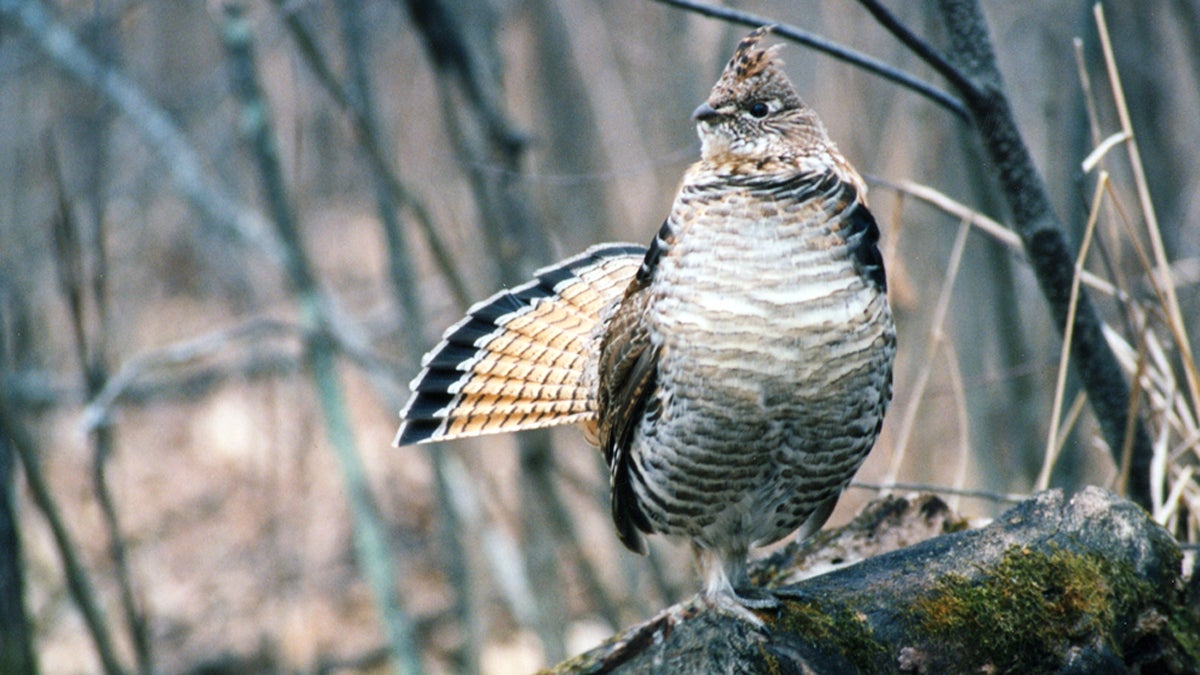Pa. state bird, N.J. favorites at risk due to climate change

Ruffed grouse (Rob Drieslein of Outdoor News/AP Photo)
The state bird and more than 80 other avian species that breed in Pennsylvania may greatly decrease or disappear from the state due to climate change.
That is according to a national report released by the National Audubon Society this week that foresees a grim future for the country’s bird populations.
“Here in Pennsylvania, for example, our state bird is a ruffed grouse, and that’s not a migratory bird,” said Keith Russell, Urban Important Bird Area Coordinator for Audubon Pennsylvania.
“It can’t move around very easily, and its habitat is predicted to change significantly because of climate, and so that bird will have to move north or else it won’t have areas that it can use,” Russell said.
The red-and-black scarlet tanager, bald eagle, and osprey are three other species at risk due to declining habitat and changing food availability in the region.
The study used three decades of citizen-science data and greenhouse gas-emissions scenarios to map each bird’s ideal range as the climate changes.
It found that 314 North American bird species will lose more than 50 percent of their current range by 2080.
In New Jersey, climate changes may mean birders will see fewer of their favorite shore birds migrating along the coast each year.
The Jersey Shore is at the confluence of several migration pathways for birds coming from New England, the Ohio River Valley and the Great Lakes region. But rising seas, especially along the Delaware Bayshore, will erode sandy beaches and inundate marshes that birds now use as rest stops on their journeys.
“As birds migrate, they require habitat to rest and refuel,” said David Mizrahi from the New Jersey Audubon Society. “And if those habitats are not there, then they aren’t able to engage in that very important rest and refueling activity.”
Ultimately, Mizrahi said, climate change and associated habitat reduction could have a big impact.
“It would translate into a decline in population,” Mizrahi said.
The national Audubon study classified three Jersey shorebirds — the red knot, semipalmated plover and ruddy turnstone — as “climate endangered.”
That means they may lose more than half of their current territory by midcentury.
WHYY is your source for fact-based, in-depth journalism and information. As a nonprofit organization, we rely on financial support from readers like you. Please give today.

